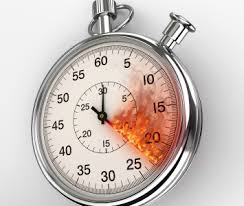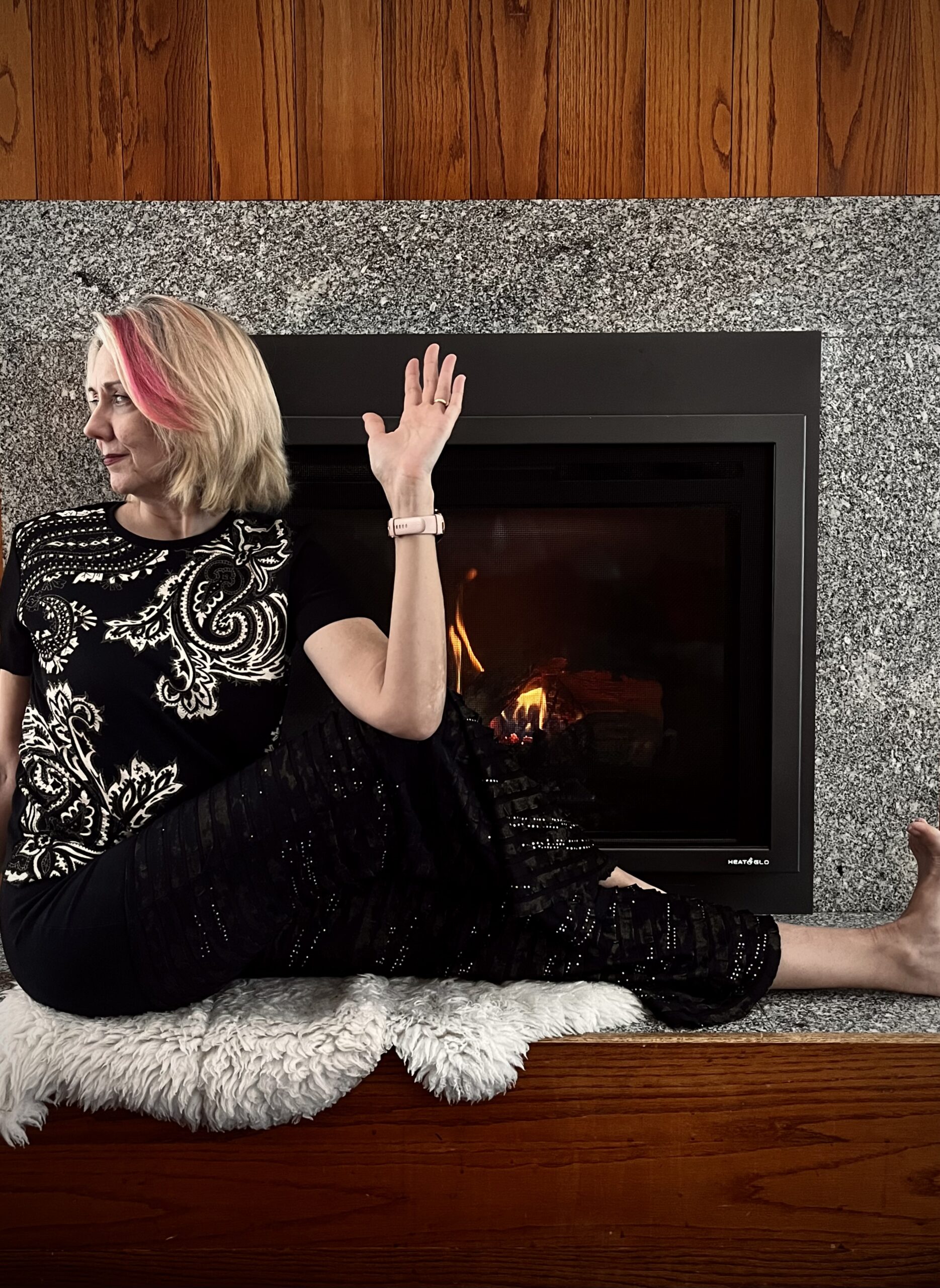Since classical yoga washed up on our shores in the mid 20th century, America has put her stamp, (make that time stamp) on it. What was a quiet meditative practice in the East, became, well, Americanized.
This wasn’t all bad; in fact, the practice has probably gotten safer and more accessible for a broader range of people and body types. We’ve also contributed a lot in terms of fashion and accessories; hence, we need all those mirrors to see how good we look–and why not throw in some trendy pop tunes or new agey music to drown out all that constant chatter in our heads? I can take it all in small doses, as long as I can go home and meditate a bit when it’s over. There is one adaptation however, I simply cannot tolerate: the standardization of yoga classes around a 1-hour format.
For that, we have the fitness industry to thank–Arnold and Jane in the old days, now Lifetime Fitness, Core Power, etc. in modern times. Somehow, the American mind has been programmed that yoga should be like a cardio exercise class, even though yoga is pretty much meant to be anything BUT cardio. I’ve even seen some 40 and 50-minute yoga classes popping up. Yes, I know, you’re busy, but who is that 1-hour format really serving: you the customer, or the business trying to cycle as many people through as possible?
Think about it this way: isn’t yoga supposed to be the antidote to busy? Yoga in its purest form is a kind of meditation. But, can you really hurry up and meditate? I say “no,” as the math just doesn’t work.
If your goal is a yoga-butt and to move through a bunch of poses in rapid succession, you can certainly tire yourself out in an hour. There are some gifted instructors out there, many with a fitness background for whom an hour is more than enough time to set you up to walk like a cowboy the next day. But, if you want the mental and cognitive benefits that only a meditative style of yoga can offer including boosted immunity, clarity, reduced anxiety, better sleep, etc., you will need more than an hour for that– 75 minutes minimum, 90 minutes or more ideal.
Why? Because, based on 15 years of teaching I know one thing is certain: it takes an average person on an average day at least 15 minutes to decompress and detach from everyday cares–and that’s on a normal day, not a bad one! That means by the time your mind stops ruminating on all those problems, poof, ¼ of your class is OVER. Now, if you perform poses in a truly meditative style, you will be into longer holding times–why? Only AFTER you get the alignment set can the yoga begin. You have to get comfortable enough in the pose and fine-tune it to the point where you stop thinking and start breathing. Moreover, if you want to work the fascia–the membrane that houses the nerve endings, you’ll have to go for longer holds. Muscles stretch in 30 secs, but fascia doesn’t get moving until at least 90!
Considering most of my students hold their first down-dog of the practice for about 3 minutes, That puts us at 18 minutes. Then there’s pranayama ( breathing exercises) deemed more important than the physical postures in classical yoga. America loves to gloss over them. For starters, they make people feel self-conscious because they look funny (not good if there are mirrors everywhere). They can also be subtle and difficult to learn. Some classical styles devote 30 minutes to pranayama alone. So, after some 15 minutes of centering, a down dog or two, and breathing exercises, you’ve nearly burned an hour!
But, what about Savasana, a.k.a. “Final relaxation?” Another corner Americans lop off with relish. One of the worst parts about teaching in a health club environment was the people cutting out early, thinking they were just too busy and/or important for Savasana. It’s the culmination of the whole practice, further up the yoga hierarchy than even all those arm balances; in fact, it’s often referred to as The Most Difficult Pose. There is a 12-minute minimum on Savasana for cognitive benefits so you get beyond concentrating on being still (it’s called corpse pose, get it?) and elevate up to the meditative state of Yoga Nidra.
Uff dah! We haven’t even gotten to inversions and balance poses though we’re well past the hour mark. I often threaten my advanced students with 2-hour classes and some do them semi-privately. They often report not feeling a huge perceptual difference as they’re in so deep.
Now, I assure you, I have been to my share of 1-hour yoga classes. I will say, in the workplace, perhaps over the lunch hour, even 30 minutes is great to break up a sedentary day. Some yoga is always better than no yoga, but to be honest, I wouldn’t waste a cute outfit on a 60-minute class. In most cases, you’re really doing group fitness with a yoga theme at best. If getting in shape is what it’s about for you, that’s fine. But if you really want to manage stress and explore higher deeper practices, you need TIME. Yoga is a lot like food: sure, we all hit the drive-through once in a while, just don’t confuse it with home cooking or make it a steady diet. At least with fast food, it’s usually economical.
When comparison shopping yoga, consider the CPM, or Cost Per Minute of the class, and you’ll see that some of those “unlimited” yoga packages (most people only get there twice a week if they don’t drop out by the third month) or community yoga isn’t such a bargain after all. If you really want to do yoga right, then a 75 – 90 minute class, 2-3 times a week is where it’s at. Start with once per week, try not to miss a week, and wait for your body, mind and spirit to crave a second helping!









